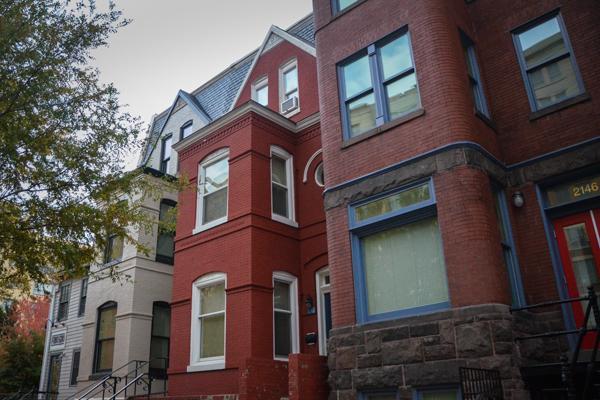Potential tenants are touring units in three F Street townhouses the University has been renovating since last year.
GW workers are finalizing renovations to the townhouses, which are designed as affordable housing units, University spokesman Brett Zongker said in an email. While the prices for these units are below market value, experts say the people who will be moving into the apartments will not be from a much lower income bracket than people who already live in Foggy Bottom.
The historic row houses were converted from single-family houses into a mix of one to three-bedroom rental apartments, University spokesman Brett Zongker said in an email. The three houses will make up a total of seven units, he said.
GW hired Nest DC, a property management company that advertises mostly market priced and luxury apartments in the D.C. area, to market the units and facilitate tours with potential tenants, Zongker said. The company complies with the Department of Housing and Community Development requirements, he said.
“Nest is trained and certified to process such leases per DHCD standards and works closely with DHCD on the application process,” he said.
The houses became available on Nov. 10, according to the listing on Nest DC’s website. To be eligible for the housing, a single-person household must earn $60,816, while a family of four is limited to an income of $87,880. Monthly rent, excluding utilities, is $1,629 for a one-bedroom unit, $1,955 for a two-bedroom unit and $2,281 for a three-bedroom unit.
The new F Street apartments will be available to residents who earn up to 80 percent of the average median income in D.C.
Individuals with incomes below 30 percent of an area’s median income are considered to be “extremely low income.” Individuals with incomes between 50 percent and 80 percent of area median income are considered to be “low income.”
Cheryl Cort, the policy director of Smarter Growth, an organization focused on promoting inclusive communities in D.C., said a one-bedroom apartment at 80 percent of the average median income level in Ward 2 are not much less expensive than other apartments in the area.
Cort said the F Street housing projects should be available for households below the 80 percent median income requirement. She said that the $1,500 to $1,600 prices for these units can be found in the same area.
Her organization recently worked on what is called “inclusionary zoning” in D.C. to lower the income limits for the 441 affordable housing units on Fourth Street from 80 percent to 60 percent of the average median income.
“The program isn’t providing at the right income level,” Cort said.
Lydia La Motta, a leasing and communications specialist at Nest DC, said the company is targeting individuals who spend more than 38 percent of their income on housing because of the high cost of living in the area.
The median sales price of apartments in Ward 2 has risen more than any other ward in the District of Columbia between 1996 and 2013, according to a report conducted by the Urban Institute.
Ward 2 has the highest average median income of all wards at more than 80 percent, mostly from one or two-person households.
GW is advertising the apartments on dchousingsearch.org, a requirement by the government, along with communication with nonprofit organizations like local soup kitchen Miriam’s Kitchen to make the houses available for people who normally would not be able to live in the Ward 2 neighborhood.
“We are marketing to everyone,” said Motta.
La Motta confirmed that Nest DC has gotten responses both from single people and families.
Ginger Rumph, the deputy director at the Coalition for Non-Profit Housing & Economic Development in D.C., said that while there have been attempts by GW to make the property available to lower income households through organizations like Smarter Growth, this may not balance with the costs of up-keeping properties.
“GW needs to make enough money to keep the building in good shape and pay taxes,” Rumph said.








